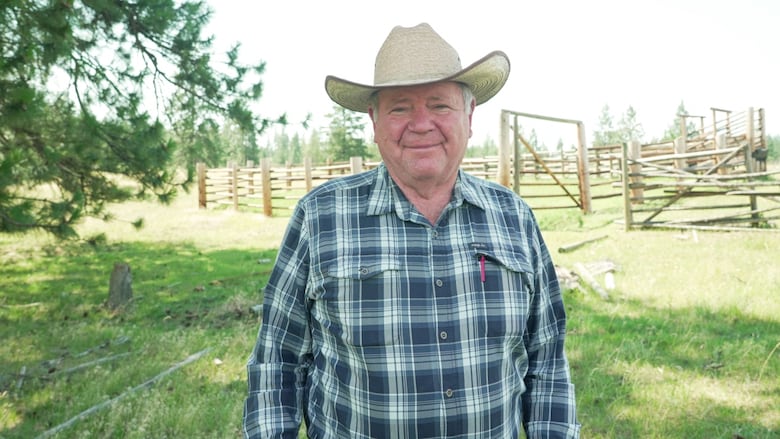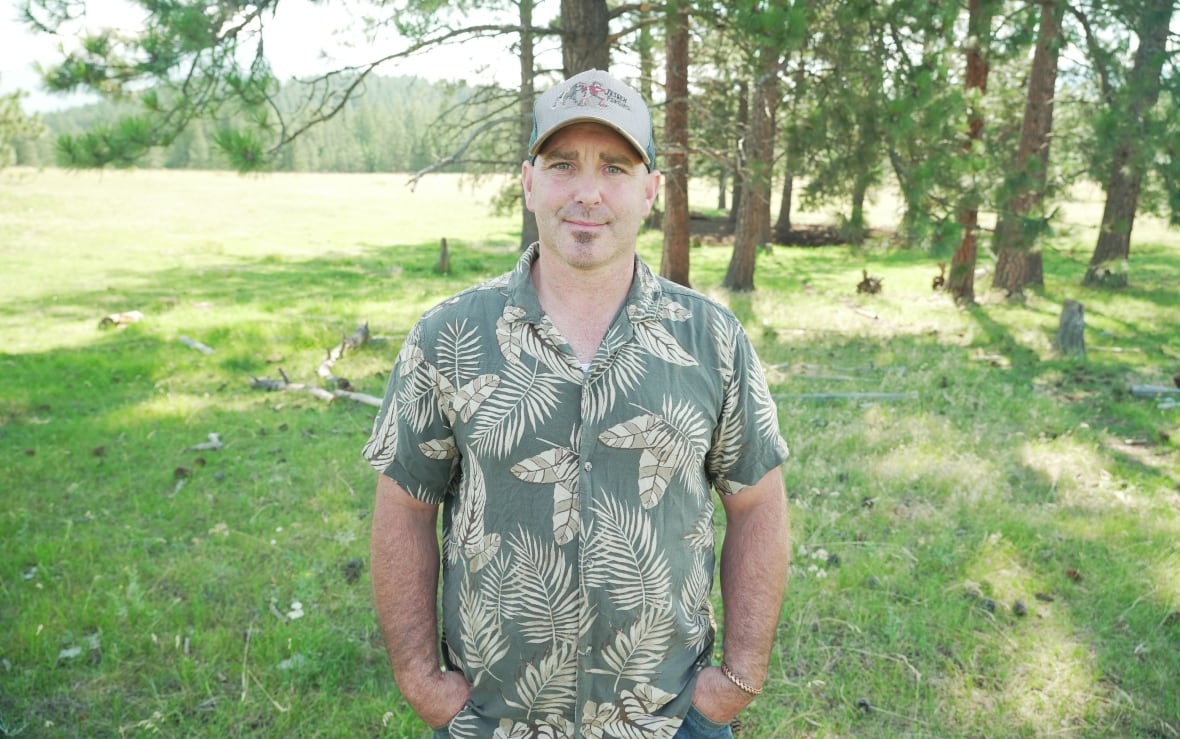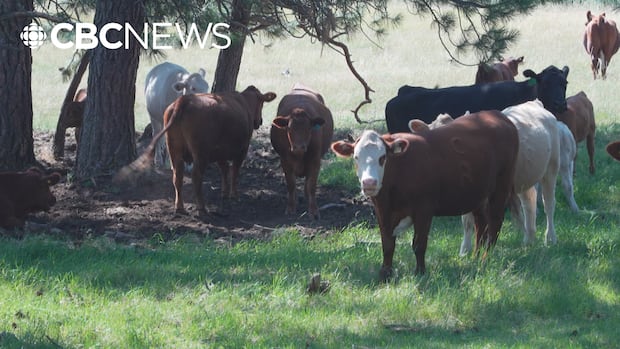Prime grazing land owned by province sitting unused, East Kootenay cattle ranchers say
Ranchers want province to open up more leasing opportunities to bolster cattle industry

The wind blows on a warm, sunny day as Morgan Dilts watches his cattle graze in a pasture near Elko, in southeastern B.C.
The land on which they're standing is Crown land leased out to ranchers for exactly this purpose — for livestock to graze.
"Our ranch does not exist without it," Dilts said. "And many, many ranches in B.C. are in the same boat."
Ranchers in B.C.'s East Kootenay are concerned that provincially-owned grazing land is shrinking, making it difficult for new ranchers to get started and for long-term veterans to stay afloat.
According to the province, grazing leases last 20 years. Rent varies, but the minimum annual cost is $675.
Randy Reay, rancher and president of the Waldo Stockbreeders' Association, says about 90 per cent of the cattle in the region graze on Crown land.
"We would not have a livestock industry here without those range tenures, and when they continue to shrink, it is almost impossible for us to increase our numbers," he said.
Reay estimates there are only about one-third of the cattle that were once in that region. He said there are about a dozen grazing tenures sitting in limbo.
There are about 37,000 animal unit months of grazing, but only about 33,000 are being used, he added. Animal unit months (AUMs) is the measurement for how much forage is needed to sustain an animal, in this case, a cow, for one month, according to the Government of Alberta.
Reay said that an unused 4,000 AUMs are "being sat on" by B.C.'s Ministry of Forests.
He said he's raised the issue with anyone who will listen — MLAs, the regional district, ministers and even the premier.
But nothing ever really changes, he said.
Food security
Without the province giving new leases to young ranchers, some fear the industry will peter out and warn that would be bad news for food security in B.C.
Dilts said the only people who have been able to make a go of cattle ranching seem to be people who are born into it and inherit land.

But for those who aren't part of a legacy ranching family, even if they can afford 100 acres and some cattle, it won't be enough, Dilts said.
"If they buy a property, there's no range out there for them to put livestock on," he said.
"A hundred acres doesn't graze enough livestock to feed to pay the bills. You could have a 20-year-old wanting to get into agriculture. They can't make it work. It's impossible."
At a time when Canada is re-evaluating how self-sufficient we really are, Reay said the province can't really afford to be getting in the way of cattle ranching.
"Certainly, we are not even close in the province of British Columbia to producing the amount of food that we consume," he said.
Wildfire mitigation
Grazing also helps prevent wildfire spread, something the province has become acutely aware of in the last 10 years, Dilts said.
Grazing means cows are getting rid of old waste material that could fuel a wildfire.
"The area that we're in is rural, but it's inhabited," he said. "It's very dangerous to have that land that was grazed at one time sit stagnant and not be grazed now with the hope that it doesn't harm somebody's livelihood and take out their homes, which we see every year now happening."
Using grazing to mitigate wildfire risk isn't new — in 2023, Quesnel had goats graze on vegetation around certain trails to see how much it helped, and in 2020, cattle were used to graze Crown land south of Cranbrook to keep dry grass at bay.
The Ministry of Forests said it is utilizing "targeted grazing" for wildfire mitigation, but did not specify where.
Infrastructure
In its email, the province said grazing land management takes into account a number of factors, including the number of livestock each piece of land can support.
"This requires extensive field work to gather information, including the amount of food available to livestock and wildlife and consideration of ecological factors," the ministry said.
It also looks at what infrastructure is available and whether it is sufficient — things like fences, corrals and water sources.
But Dilts said the ministry should be taking care of its property and the infrastructure on it all the time to make sure that land is useful for people who want to lease it.
"Each time one of these tenures that's been inactive for a long time is even looked at, that's one of the big factors of holding the whole program up," Dilts said.
"It's like having a house, but because the tenants aren't in the house anymore, we're going to let it fall apart until we find some other tenant that'll take it over. It doesn't make any sense."
The province said First Nations and wildlife considerations are also key when deciding to lease land to ranchers.
Dilts hopes the province will see the benefits to leasing grazing land to cattle ranchers in the East Kootenay — and soon.
"The government needs to step away from the red tape and get into some green lights."
With files from Corey Bullock
